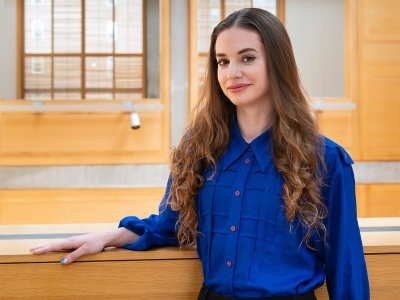As Canada’s major political parties finalize candidate nominations ahead of the Sept. 20 election, a project at Carleton University will help determine whether the candidates are representative of an increasingly diverse electorate.
The 2019 federal election saw a record number of racialized, Indigenous, and women candidates on the ballot. But parties report only sporadically on candidate demographics and publicly available, riding-level data on diversity in Canadian elections has been hard to come by.
“Tracking Candidate Diversity in Canadian Elections” will help change this. The project is led by Erin Tolley, the Canada Research Chair in Gender, Race, and Inclusive Politics and an associate professor in the Department of Political Science and Aneurin Bosley, an assistant professor in the School of Journalism and Communication. Three journalism students are working as research assistants.
The dataset includes information on candidate gender, race, Indigenous background, age, occupation, and prior electoral experience, as well as riding, party, and province.
“Anecdotally, we know that elected institutions don’t fully reflect the populations they represent, but this project will help us assess the extent of that under-representation and to track it over time,” says Tolley. She adds that riding-level data on candidate diversity can be used to answer other questions, including whether candidates from historically under-represented groups are nominated in winnable or lost-cause districts, which candidates receive the most financial support from their parties, and whether the media cover so-called “diverse” candidates differently.
“This is important information for people to have,” says Bosley. “Local media will often report on candidate diversity but this information is not readily available on a national scale.”
The project’s research team, fourth-year Bachelor of Journalism students Nandini Gokhale, Emma Jackson, and Michelle Liang, have been working throughout summer to identify nominated candidates and compile information on their demographics.
“It’s been eye-opening to find out about the backgrounds of the candidates who we elect to represent us in Parliament,” says Liang. “I think the information will help Canadians be further aware of the levels of diversity that we can find with our MPs.”
Jackson agrees. “This data can give Canadian voters greater awareness about an issue that deserves more attention,” she says.
The student researchers are also hopeful that this project will help ensure this kind of data is readily available in the future.
“This research can act as the foundation for a lot of further study and coverage on the topic in the future, which is really exciting,” says Gokhale.
The research team plans to produce a series of news stories and infographics on candidate diversity during and after the election campaign.
Tracking Diversity in Canadian Elections builds on data collected by Tolley, along with Marc André Bodet, Anna Johnson, and Melanee Thomas following federal elections in 2008, 2011, 2015, and 2019. The project is funded by the Faculty of Public Affairs, the School of Journalism and Communication and the Canada Research Chairs program, as well as a donation from former Toronto Star executive John Honderich.
Monday, August 16, 2021 in Journalism News, News
Share: Twitter, Facebook



